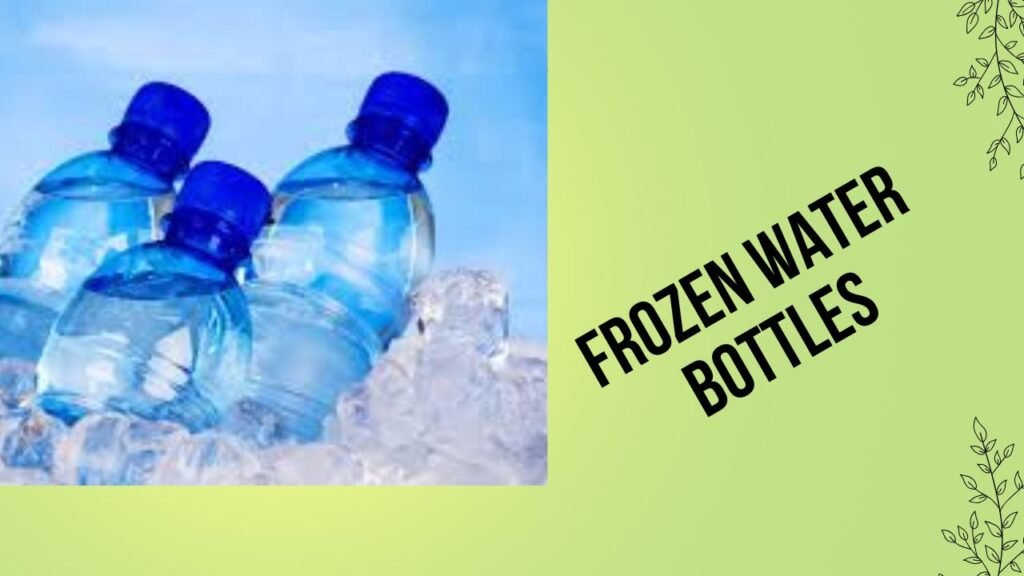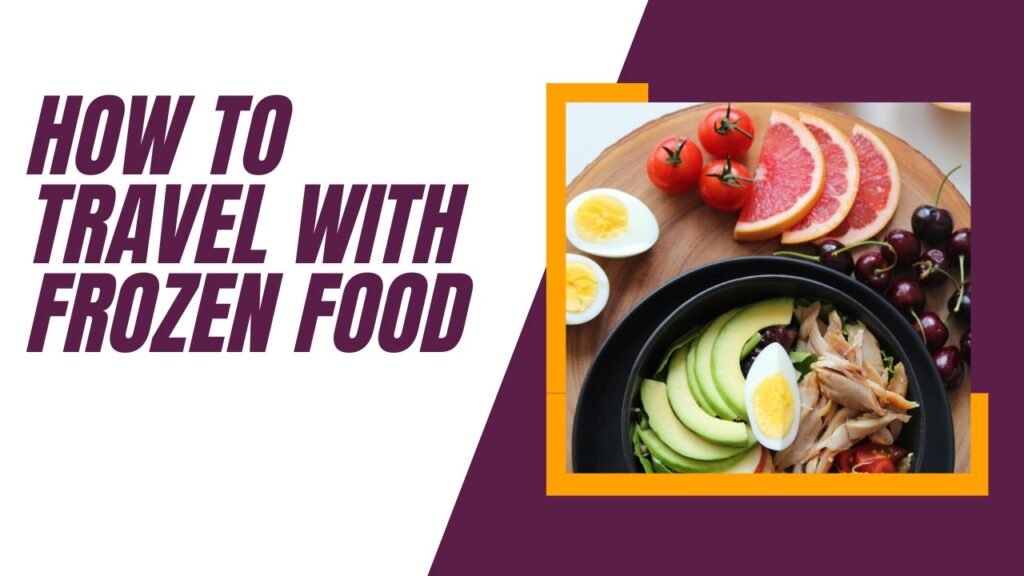Imagine planning a long road trip or moving to a new city, and realizing you can’t leave behind all your favorite frozen meals. Whether it’s homemade ice cream, frozen vegetables, or bulk purchases from the store, how to travel with frozen food becomes a crucial question. Don’t let thawed groceries dampen your journey! This guide will walk you through everything you need to know to keep your frozen goodies intact, ensuring delicious and safe meals wherever you go.
Why Travel with Frozen Food?
Convenience on the Road
Traveling with frozen food means you have ready-to-eat meals and snacks available, saving you time and money on dining out. Imagine pulling over for a picnic with ice-cold desserts or having fresh vegetables for your meals—sounds perfect, right?
Reducing Food Waste
Bringing your own frozen food helps minimize waste. Instead of throwing away perishables, you can utilize them throughout your trip, ensuring nothing goes to waste.
Cost-Effective
Buying frozen food in bulk or preparing your own meals can be more economical than purchasing individual items on the go. It also allows you to maintain a healthier diet by controlling the ingredients and portions.
Key Principles for Traveling with Frozen Food
Temperature Control
Maintaining a consistently low temperature is paramount. The goal is to keep your frozen items below 0°F (-18°C) to prevent thawing and preserve quality.
Minimizing Exposure to Warm Air
Limit the time frozen food spends outside of a cold environment. The less exposure to warm air, the better the preservation of your food.
Preventing Cross-Contamination
Ensure frozen foods are sealed properly to avoid contact with raw meats or other items that could cause contamination.
Top Methods for Traveling with Frozen Food
1. Insulated Coolers
Insulated coolers are your best bet for keeping frozen food cold during travel. Here’s how to maximize their effectiveness:
How It Works
- Insulation Layers: Coolers are designed with thick insulation to keep cold air in and warm air out.
- Ice Packs or Dry Ice: Adding ice packs or dry ice can extend the cooling duration.
Tips for Success
- Pre-Chill the Cooler: Place ice or cold packs in the cooler for a few hours before loading your frozen food.
- Use Block Ice: Block ice melts slower than ice cubes, providing longer-lasting cold.
- Pack Efficiently: Fill the cooler to minimize air gaps, which helps maintain a consistent temperature.
- Limit Opening: Keep the cooler closed as much as possible to retain the cold air inside.
Example Setup
| Item | Quantity | Purpose |
|---|---|---|
| Insulated Cooler | 1 | Main container for frozen food |
| Ice Packs | 4-6 | Maintain cold temperature |
| Frozen Food Items | As needed | Items to be transported |

2. Dry Ice
Dry ice is a highly effective method for keeping food frozen without the mess of melting ice.
Benefits
- Extremely Cold: Dry ice stays solid at -109.3°F (-78.5°C), providing a long-lasting cooling effect.
- No Liquid Residue: It sublimates directly into gas, leaving no water behind.
Safety Precautions
- Handle with Gloves: Dry ice can cause severe frostbite upon direct contact with skin.
- Ventilation: Ensure the transport area is well-ventilated to prevent gas buildup.
- Proper Containers: Use containers designed for dry ice to contain the sublimated gas safely.
3. Thermoelectric Coolers
Thermoelectric coolers use electricity to maintain cold temperatures, making them ideal for longer journeys.
How It Works
- Electric Power: These coolers plug into your car’s power outlet, providing continuous cooling.
- Temperature Control: They often come with adjustable temperature settings for precise control.
Advantages
- Reusable: Unlike ice, they can be used repeatedly without the need for constant replenishment.
- Consistent Cooling: Provide a steady temperature, ideal for sensitive frozen items.
4. Styrofoam Boxes
For shorter trips, Styrofoam boxes can offer a simple and effective solution.
Setup
- Layering: Place a layer of dry ice or ice packs at the bottom and top of the box for maximum insulation.
- Sealing: Ensure the box is tightly sealed to prevent warm air from entering.
Pros and Cons
| Pros | Cons |
|---|---|
| Lightweight and portable | Limited insulation compared to coolers |
| Easy to use | Not reusable |
| Cost-effective | May not keep items frozen for long periods |
5. Portable Freezers
Investing in a portable freezer might be worthwhile if you frequently transport large quantities of frozen food.
Features
- Large Capacity: Can store significant amounts of frozen food.
- Battery Operated: Some models run on rechargeable batteries, ideal for extended trips.
Benefits
- Long-Term Use: Suitable for regular transport needs.
- Versatility: Can be used in various settings, including RVs and boats.
Combining Methods for Optimal Results
Sometimes, using a single method might not suffice, especially for extended trips or large quantities. Combining methods can enhance the effectiveness of your transportation strategy.
Example Combination
| Method | Implementation | Benefits |
|---|---|---|
| Insulated Cooler | Use a high-quality cooler with ice packs | Maintains low temperatures effectively |
| Dry Ice | Add dry ice on top of the frozen items | Provides extra cooling power |
| Thermoelectric Cooler | Plug into the car’s power outlet for continuous cooling | Ensures steady temperature during transit |
Creative DIY Solutions

1. Frozen Water Bottles
Use frozen water bottles as an alternative to ice packs. They provide consistent cooling and eliminate the mess of melting ice.
How to Use
- Freeze in Advance: Freeze water bottles overnight.
- Reuse: After transporting, simply refill and freeze them again.
2. Reflective Insulation
Wrap your cooler or containers with reflective insulation to deflect heat and retain cold temperatures.
Setup
- Material: Use reflective blankets or emergency thermal blankets.
- Application: Wrap around the cooler or container before loading frozen items.
3. Car Vent Coolers
Utilize your car’s air conditioning system to keep the transportation area cool.
How It Works
- Vent Placement: Place coolers in front of the car vents.
- Airflow: The cold air helps maintain lower temperatures inside the cooler.
Best Practices for Traveling with Frozen Food
Pre-Planning and Organization
- Inventory Check: Know what you’re transporting to pack efficiently.
- Pack Strategically: Place heavier items at the bottom and lighter ones on top.
Minimizing Exposure Time
- Quick Loading: Have everything ready before loading to reduce the time the cooler is open.
- Efficient Unloading: Plan your route to minimize stops, keeping the cooler closed as much as possible.
Securing Your Load
- Stabilize Containers: Use straps or bungee cords to prevent movement during transit.
- Upright Position: Keep coolers upright to prevent spillage and maintain insulation.
Monitoring Temperature
- Thermometers: Place a thermometer inside the cooler to monitor the internal temperature.
- Check Regularly: Ensure that the temperature remains consistently low throughout the journey.
Challenges and Solutions
Long Distances
Transporting frozen food over long distances can be challenging due to extended exposure to varying temperatures.
Solution: Use high-capacity insulated coolers with multiple ice packs or dry ice. Consider investing in a portable freezer for the most reliable results.
Limited Access to Power
Without access to electricity, maintaining consistent temperatures can be difficult.
Solution: Opt for methods that don’t rely on power, such as insulated coolers with dry ice or Styrofoam boxes with ice packs.
Space Constraints
Limited space in vehicles can make transporting large quantities of frozen food tricky.
Solution: Plan your packing layout to maximize space efficiency. Use stackable containers and prioritize essential items.
Frequently Asked Questions (FAQs)
1. How long can frozen food stay frozen during travel?
The duration depends on the method used. With a high-quality insulated cooler and sufficient ice packs or dry ice, frozen food can stay frozen for up to 24-48 hours. Thermoelectric coolers and portable freezers can extend this period even further.
2. Is dry ice safe to use for transporting frozen food?
Yes, dry ice is safe when handled properly. Always use gloves to prevent frostbite, ensure good ventilation to avoid gas buildup, and store it in containers designed for dry ice.
3. Can I use regular ice instead of dry ice?
Regular ice can be used, but it melts faster, which may not keep your food frozen for as long as dry ice. For longer trips, dry ice is more effective.
4. What types of containers work best for transporting frozen food?
High-quality insulated coolers, Styrofoam boxes, and portable freezers are the best options. Ensure that the containers are airtight and have sufficient insulation.
5. How can I minimize thawing during transportation?
Pre-chill your cooler, pack it tightly with frozen items and ice packs, limit opening the cooler, and use additional insulation like reflective blankets.
6. Are there eco-friendly ways to transport frozen food?
Yes, using reusable ice packs, frozen water bottles, and insulated containers can reduce waste. Additionally, evaporative cooling methods and solar-powered coolers offer sustainable alternatives.
Personal Tips and Preferences
From my experience, combining a few methods yields the best results. For instance, using a cooler with block ice, placed inside an insulated bag and wrapped in a reflective blanket, can keep your food frozen for up to 48 hours. It’s all about layering your approach to maximize cooling efficiency. Have you tried any of these methods? Share your experiences!
Conclusion
Mastering how to travel with frozen food is essential for maintaining food safety, preserving quality, and minimizing waste. Whether you’re embarking on a road trip, moving houses, or delivering goods, understanding and implementing the right transportation methods can make all the difference. From using insulated coolers and dry ice to creative DIY solutions and best packing practices, there are numerous ways to ensure your frozen items remain just as fresh and delicious as when you first stored them.
Remember, the key to success lies in planning and combining multiple strategies to create a robust system tailored to your needs. Don’t be afraid to experiment and find what works best for you. After all, traveling with frozen food doesn’t have to be a hassle when you have the right knowledge and tools at your disposal.
So next time you need to transport frozen food, you’ll be well-prepared to keep your meals safe and your freezer intact. Happy traveling!


